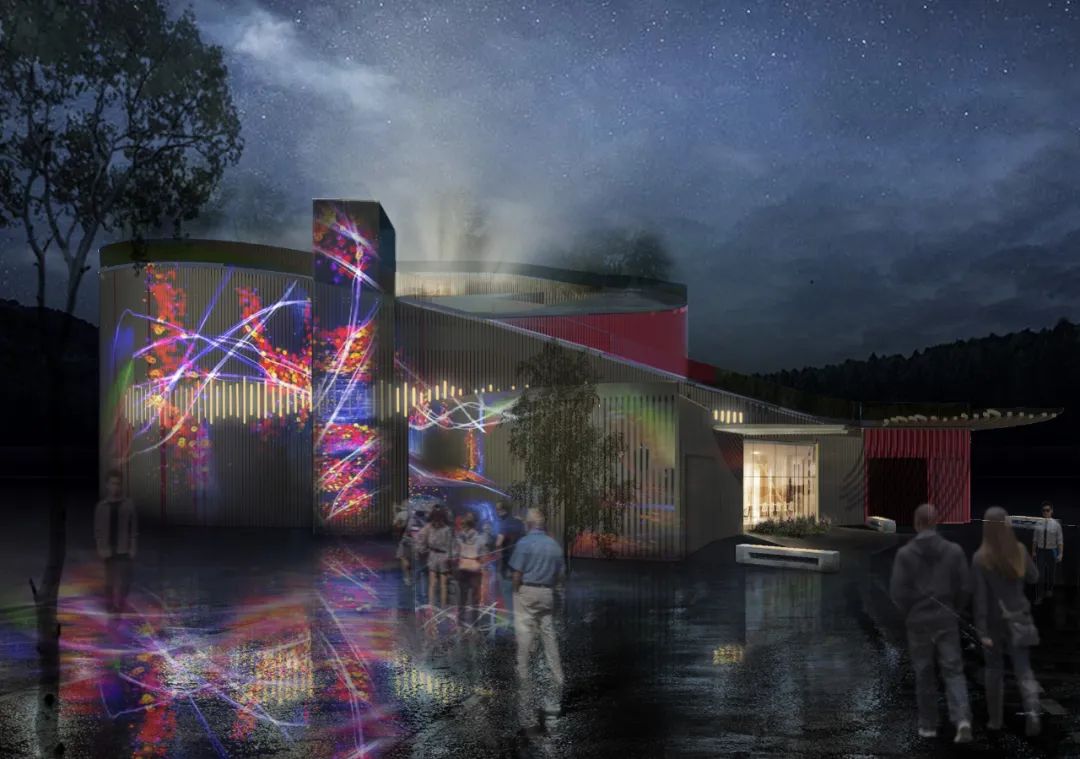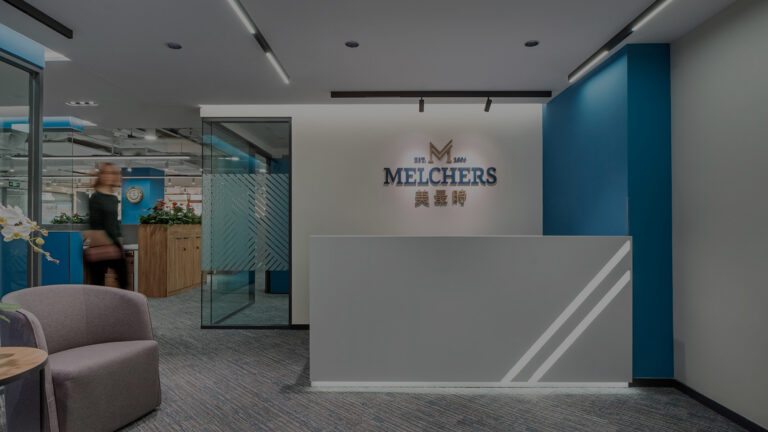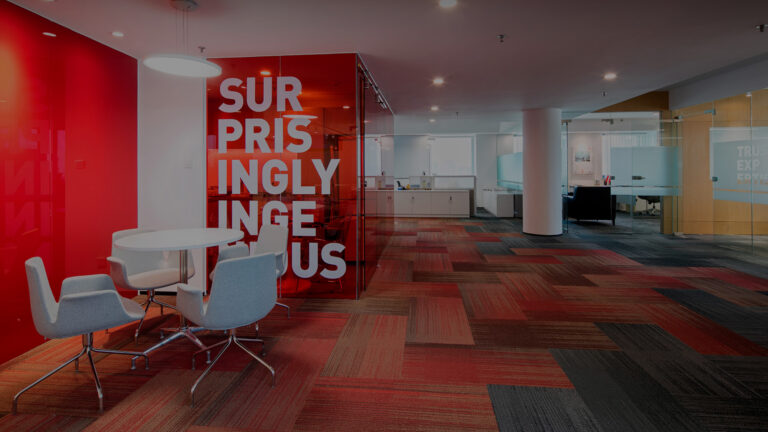We are proud to present the work that we have developed as part of the design competition for the Austrian Pavilion at the World Expo 2025 in Osaka. While this pavilion design concept was not successful, it is an excellent example of how storytelling can be applied during the creative design process.
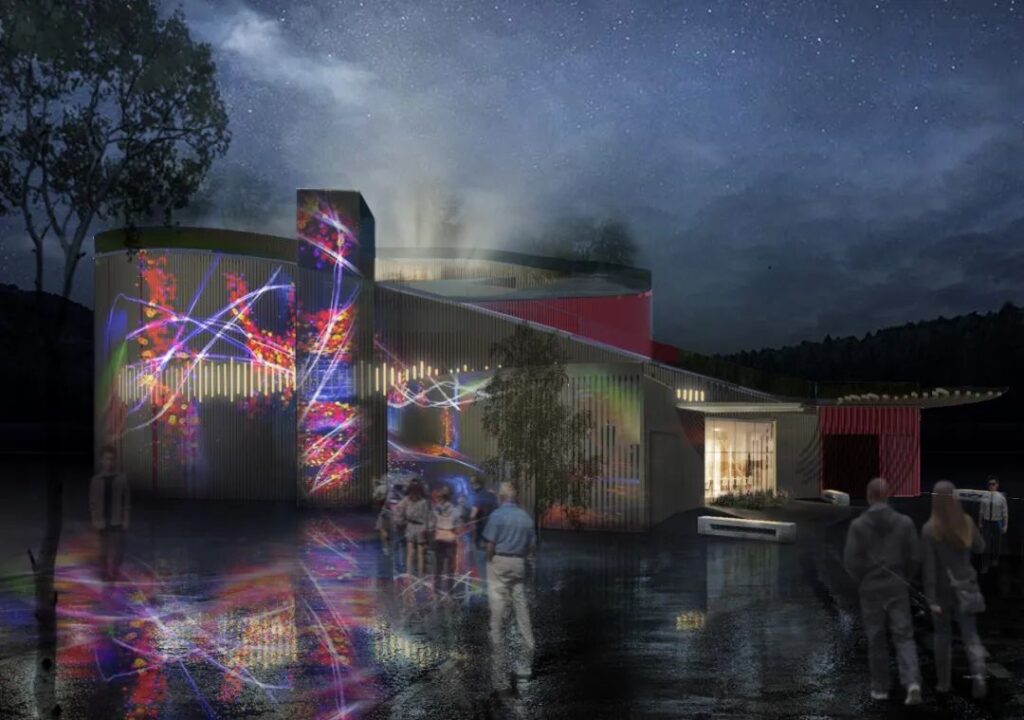
The Expo’s theme “Designing Future Society for Our Lives” includes focal points such as “Co-Creation”, “Robotics” and “AI”. Exhibiting countries are invited to present projects and technologies that are suitable for achieving the Sustainable Development Goals set by the United Nations by 2030.
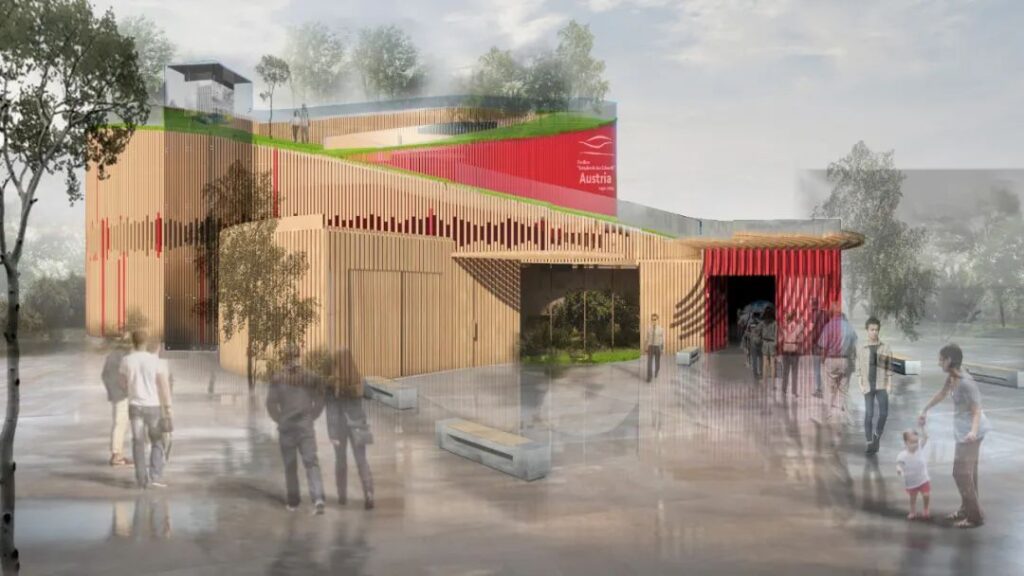
When storytelling is done correctly during the design process, story concepts or values intrinsically linked to the country’s positioning are abstracted and woven into the overall design of a structure or space. On a large scale, applying the story inspirations should happen subtly and abstractly to avoid cliches and tacky designs. When applied to areas where visitors interact directly, the execution can be more concrete. We will explain how we did that for this project below.
Resonance as the Core Idea
As humans, we are responsible for shaping our future; each individual’s actions impact this world. If, for example, many people work to implement the idea of sustainability, a kind of positive resonance, insight, and agreement is created, and the idea gains energy and impact. “Resonance” is also an essential concept in music, thus a reference to Austria’s image as the “Country of Music”.
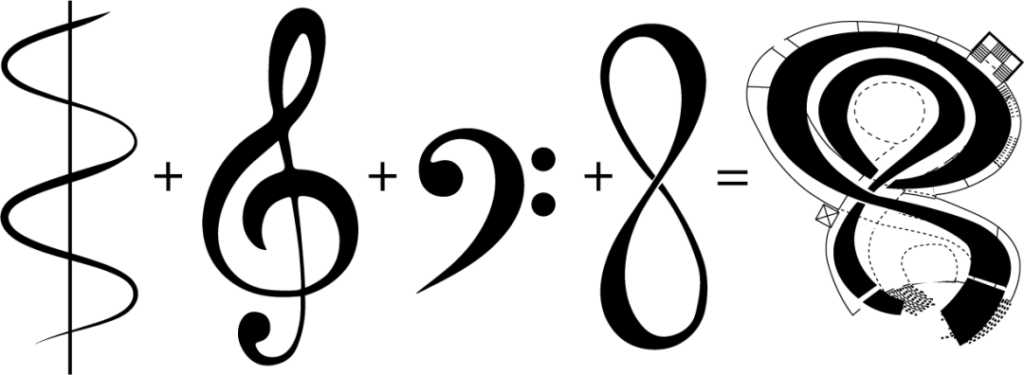
The architectural design concept is inspired by flowing musical shapes and the infinity symbol.
- The bass and violin clefs provide space for the individual low and high voices of music and unite them into an artistic, grand whole – into “harmony”. This is a reference to the individual voices we have as humans, and collaboration being an important aspect in creating a shared and harmonious, yet multi-layered future.
- Resonance waves are a sequence of curves. A synchronized resonance pattern from sustainable and coordinated actions creates overall harmony and balance.
- The architectural forms are inspired by flowing, musical shapes. At the same time, the curves of the pavilion bend into an implied “Infinity” symbol, the sign of unity and infinity
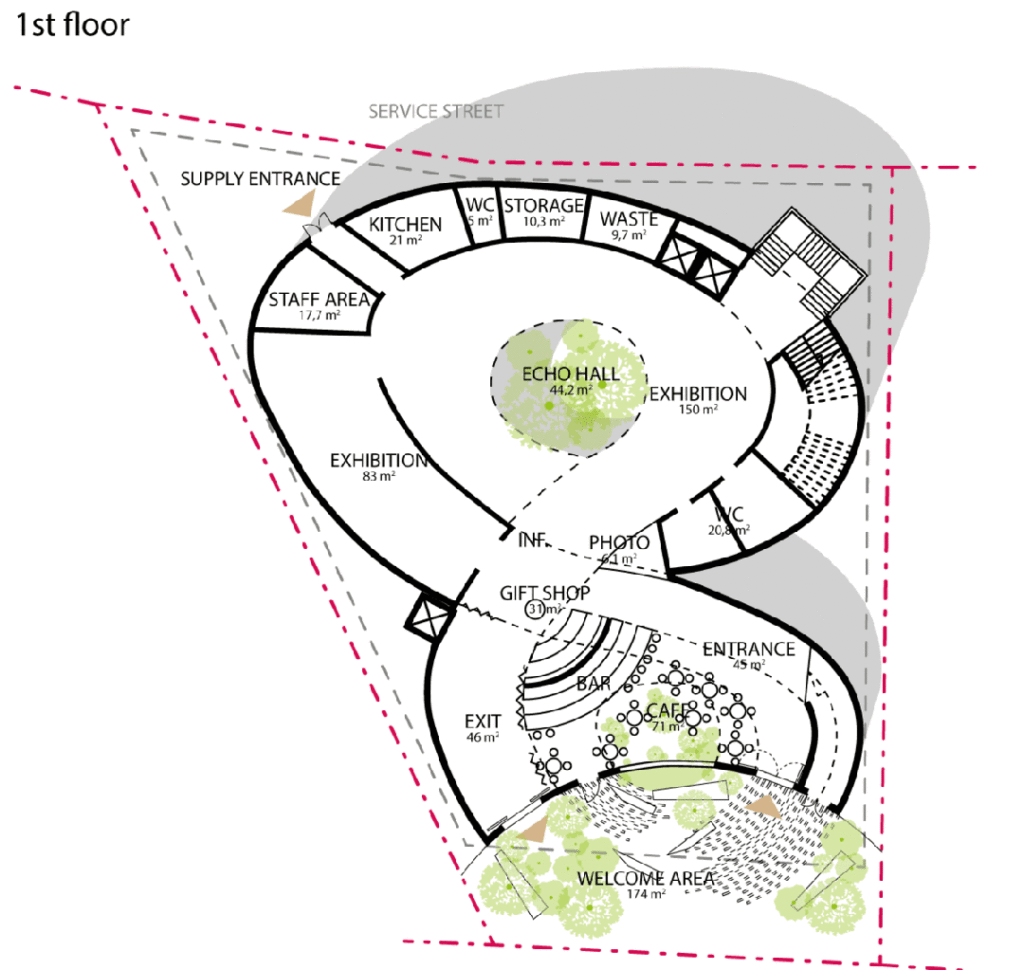
The final architecture perfectly fits into the available lot and maximizes space.
Story keywords: Music, flowing lines, resonance, future, infinity
Austrian Signature Landscape
The pavilion’s design is also an abstraction of Austrian landscape forms: It’s a modern interpretation of the Austrian pre-Alpine region’s mountains, hills, and valley landscapes. Wood is a significant local resource and is used as a building material.

While the front and left sections of the building’s exterior are kept in natural wood color, the facade transitions into a rich red tone towards the right side. Here, the red color represents the multicultural influence and diversity, hospitality, and the well-known Austrian charisma – in short, the qualities for which Austria is renowned worldwide.

East Asian Philosophy: The Earth, Human, and Sky Trilogy
Embedded within the spatial design is the trinity principle: The pavilion is divided into three thematic areas in the interior, inspired by the East Asian philosophy of “Earth – Human – Sky.”
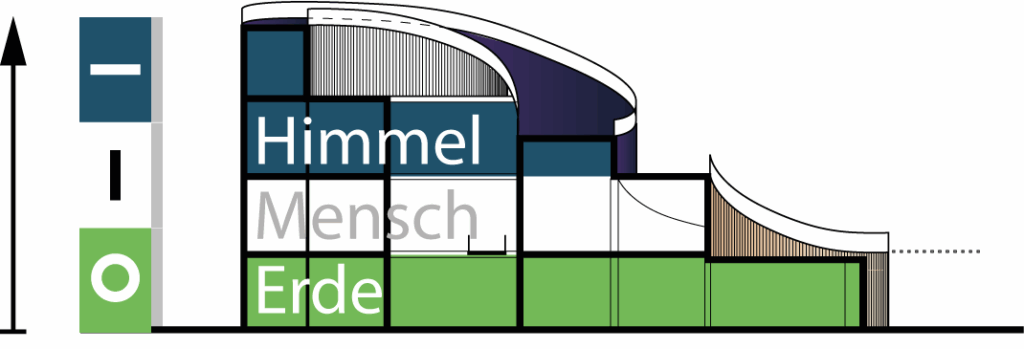
The ground floor, with the thematic area “Earth”, showcases exhibition content such as: What is Austria? Clichés are questioned. The second floor, “Human,” showcases technologies that people will be able to use in everyday life in the future: at work in a wide variety of industries, in education, and in private life. The top floor, “Sky,” deals with more abstract topics and visionary projects. An open space, the “Echo Hall” in the center of the building was designed to confront visitors with themselves and encourage them to reflect.
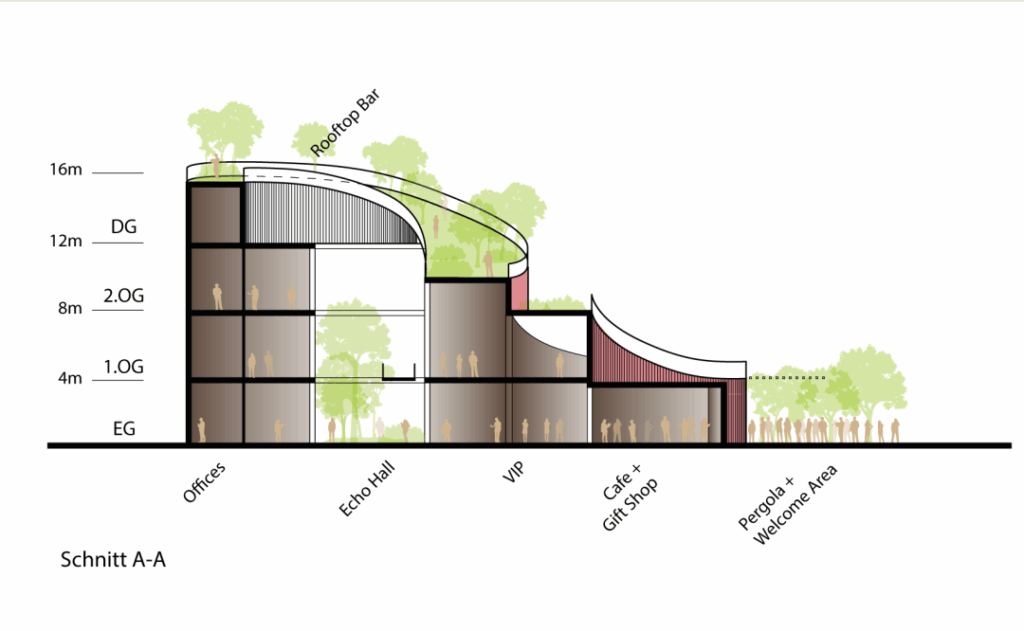
Why is Nation Branding Important?
Nation branding is important for countries to attract more investment and a high-skilled workforce, support the export of products of local companies, and promote tourism. Companies that export products will also benefit considerably from a strong country image – a Nielson study found that over 70% of global consumers believe that the location of a product is important and affects their purchase decision.
Storytelling helps to build an emotional connection with visitors and creates a lasting impression.
Read our previous article about Nation Branding for more information.

